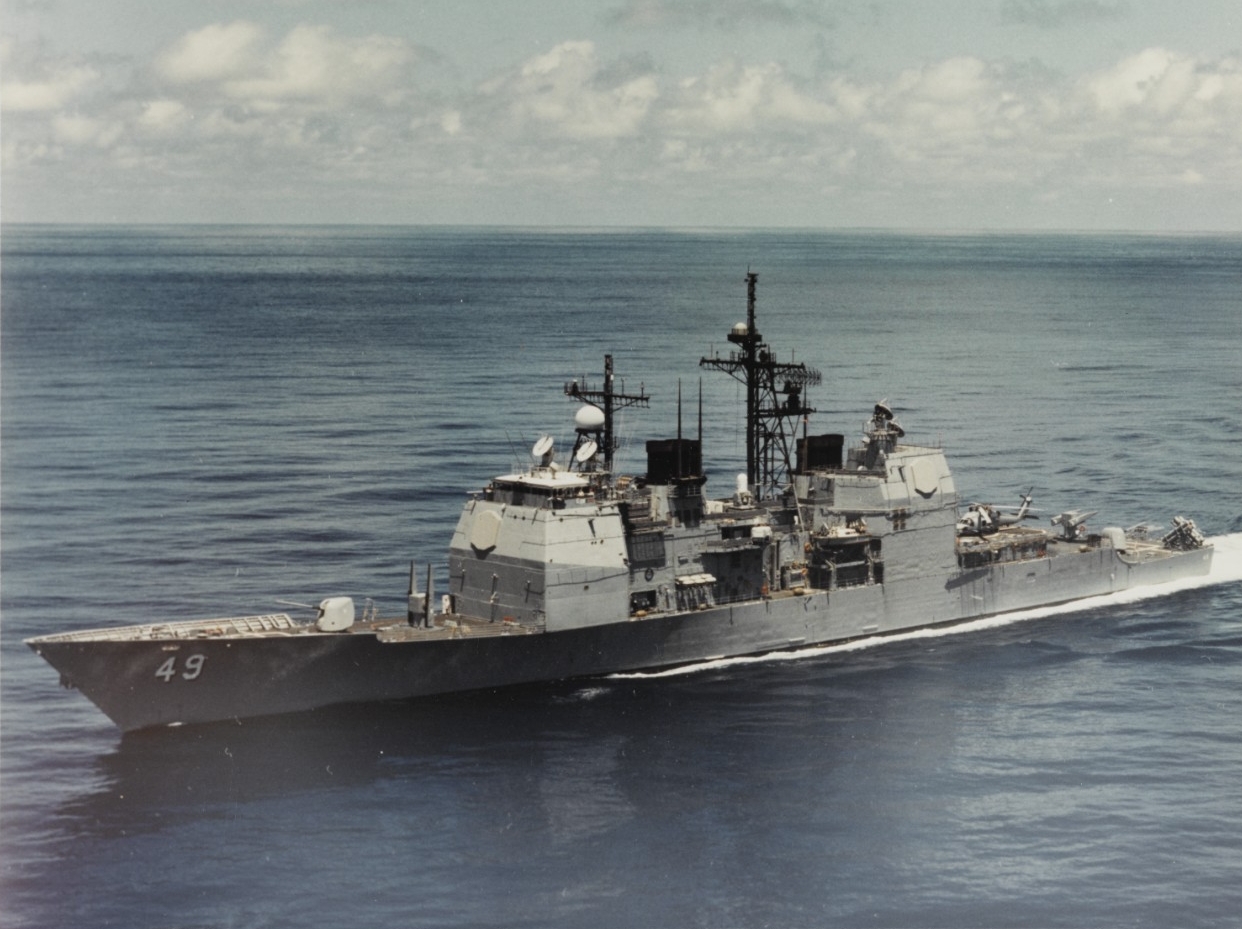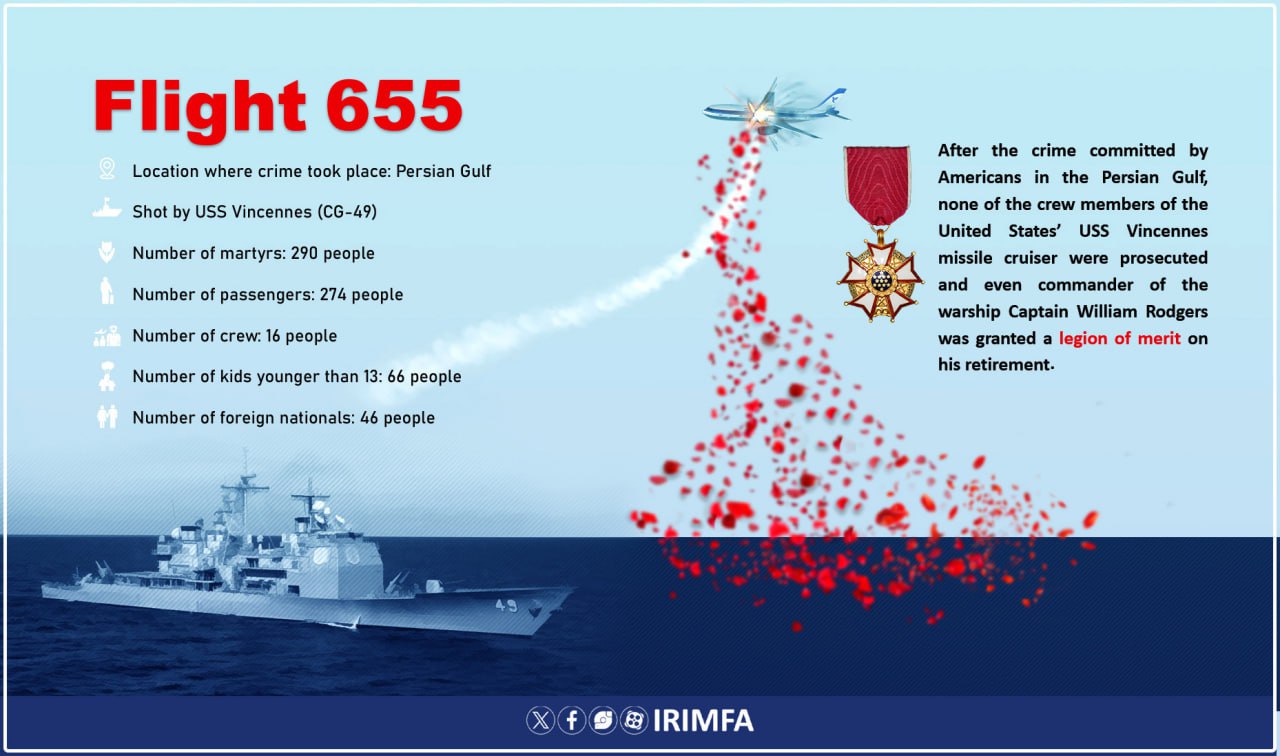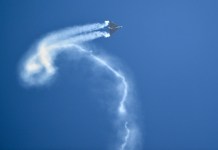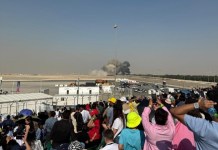The US entering the ’12-Day War’ against Iran and bombing its nuclear facilities will be remembered in posterity as a crucial day in West Asian politics. However, there is another incident against Iran that is now nearly forgotten: the downing of an Iranian passenger plane during the Iran-Iraq War.
The Prelude To The Downing Of The Iranian Jetliner
The US and Iran have had a troubled past. They went from being close allies to adversaries after the Iranian Revolution of 1979, which toppled the US-backed Reza Shah Pahlavi. This animosity peaked shortly after the revolution when Iran was invaded by Iraq under the leadership of Saddam Hussein.
During the Iran-Iraq war that lasted from 1980 to 1988, the US saw Iraq as a bulwark against the revolutionary government under Ayatollah Khomeini, whose influence it was determined to limit.
While officially neutral, the US provided significant military, intelligence, and economic aid to Iraq, including dual-use technology such as helicopters and chemical precursors. Thus demonstrating that the US and Iran had not moved on from the 1979 Revolution and the hostage crisis that followed.
Besides providing intelligence and indirect military support, the United States increased its engagement in the Persian Gulf in the mid-1980s to defend oil tankers, many of which were flagged as American, from Iranian attacks.
Iran had allegedly been attempting to obstruct Iraq’s resupply via the Persian Gulf by launching rockets at ships and placing mines.
The US launched operations like Earnest Will between 1987 and 1988, which saw US Navy ships escorting Kuwaiti tankers supporting Iraq’s oil exports, indirectly bolstering Iraq’s economy. It was during one of these missions of protecting oil tankers that the US accidentally downed an Iranian airliner.
The US Downing Of An Iranian Passenger Plane
The incident took place on July 3, 1988, when the Iran-Iraq war was in its last phase, and the West Asian region was witnessing increased tensions.
The US Navy had been dedicated for over a year to safeguarding commercial shipping passing through the Persian Gulf that was in danger due to the so-called “tanker war.”
The US presence in the Persian Gulf meant it was directly pitted against Iranian forces. For instance, ahead of the July 3 incident, an Iranian missile mine hit the US cruiser named USS Samuel B. Roberts on April 14, 1988, nearly splitting the ship in two.
Four days later, the US fired at and sank an Iranian ship.
On July 3, 1988, when USS Vincennes struck the Iranian airliner, the US warship was fighting Iranian gunboats and defending Kuwaiti oil tankers in the Persian Gulf.
Iran Air Flight 655 took off from Bandar Abbas, a dual military-civilian airport where the Iranian military had deployed several of its F-14 fighter jets, according to a US Navy investigation of the shootdown.
The F-14s, according to information available to the US, were equipped with Maverick missiles, which could engage US ships within a 16-kilometer range.

A day before the mistaken shootdown, another US warship, USS Halsey, had warned one of those F-14s away when it approached the US ship too closely.
The Vincennes and the frigate USS Montgomery were fighting alongside on the morning of July 3 when Iranian gunboats threatened a Pakistani tanker in the Gulf. This operation was still ongoing when Iran Air 655 took off from Bandar Abbas, nearly 30 minutes past its scheduled departure time.
The investigation claimed that the Iranian pilot was not aware of the hostilities in the region, despite warnings issued by the Bandar Abbas tower on previous occasions.
According to reports, the Iranian jetliner did not respond to the warnings given by US warships. However, the investigators admitted that it was likely that the aircraft’s crew were not watching the channels that broadcast the warnings from the United States.

On board the USS Vincennes, the captain received word that a radar-contacted aircraft that was unidentified was not returning calls. He was also misinformed that this contact might be an F-14 from Iran.
According to the US investigation, the captain had fewer than five minutes to assess whether the ship was in danger based on whether the Iranian aircraft was carrying the deadly Maverick missiles.
With only minutes to determine whether his ship was within range of missiles carried by an Iranian warplane, the captain of the Vincennes ordered the firing. These orders were essentially designed to err on the side of protecting US lives.
The US warship had launched surface-to-air missiles at the Iran Air Airbus A300 seven minutes after it took off. The aircraft was hit, and all 290 people aboard were killed as it crashed.
The US initially claimed the plane was descending toward the Vincennes and outside its commercial corridor, but later investigations confirmed the airliner was ascending, within its designated airway, and squawking a civilian code. Additionally, some reports suggest that the Vincennes was also in Iranian territorial waters at the time.
The investigation from the US Navy attributed crew error to psychological stress experienced by troops who were engaged in combat for the first time. It was admitted that the misidentification stemmed from a combination of human error and miscommunication.
The US officials also added that the grave error was influenced by the heightened alertness following prior attacks on US ships, such as that on USS Stark in 1987.
This incident occurred on May 17, 1987, when the US Navy frigate USS Stark was struck by two Exocet missiles fired by an Iraqi Mirage F1 fighter in the Persian Gulf, killing 37 sailors and injuring 21. The attack was defended as a mistake by Iraq, but it laid the basis for US aggression.
Iran referred to the downing of the plane as a “barbaric massacre” and sued the US government in the International Court of Justice in 1989. Many Iranians viewed it as an intentional show of force, possibly to pressure Iran during the war.

The US referred to it as a “tragic accident” but never formally apologized.
It eventually agreed to compensate the families of the Iranians killed in the attack with $62 million in 1996 without admitting liability. In fact, Captain William C. Rogers III, who was commanding the Vincennes on D-Day, was awarded the Legion of Merit, further outraging Iran.
While the world essentially moved on from the incident, the world was once again reminded of it (and the many other mistaken downings of passenger jets) when a Ukrainian passenger jet was downed by Iran in 2020 amid the fog of war triggered by the assassination of Iranian General Qassem Soleimani.
Iran admitted that its Revolutionary Guard had fired two missiles at the plane by mistake.
- Contact the author at sakshi.tiwari9555(at)gmail.com
- Follow EurAsian Times on Google News




